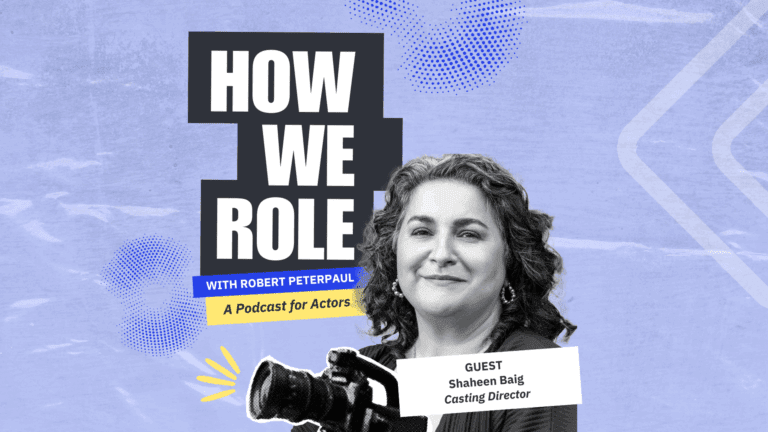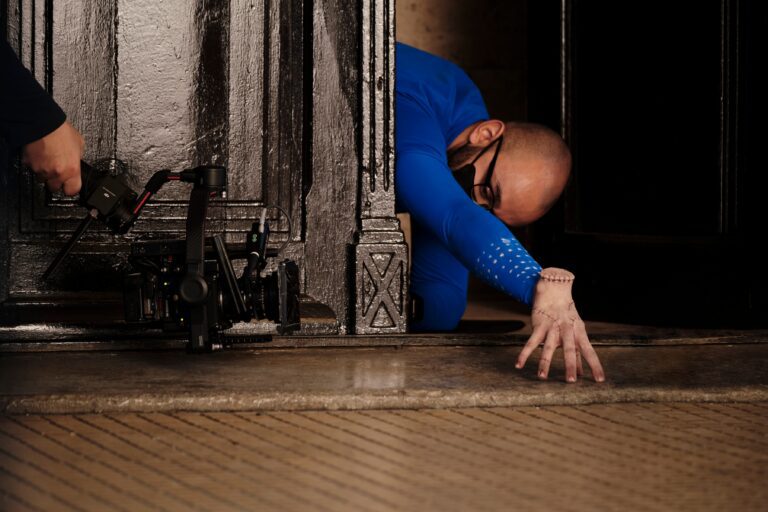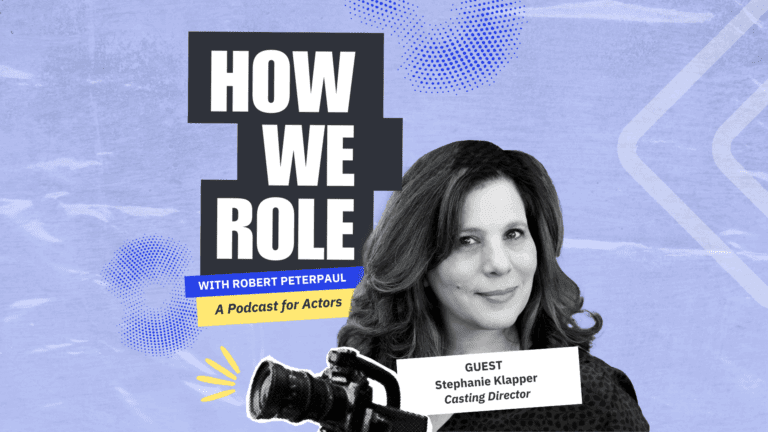The internal world of a character is about building an authentic life for the person you’re playing. Emotional preparation is about effectively using your character’s persona, their past life events, and the choices they make throughout the story. You can engage in this process using tools like guided meditation and music to evoke emotional cues.
As an actor, it’s important to understand how this process can help you. Playing a character who differs from you can be challenging, but by building an internal sense of self, you can unlock your character’s emotional state. However, it’s important to be safe and use the process as a tool, trying not to indulge in negative emotions.
Acting is about telling the truth under imaginary circumstances. So, for an actor looking to play a role where their character has lived through the unimaginable, has experienced inconceivable trauma, or even great joy, emotional preparation is the best place to start.
What You’ll Find in This Article
- Finding your Character
- Following the Journey
- Research and Exploration
- Five Minutes Before and After
- Tips, Techniques and Exercises
Finding Your Character
Building the internal world of your character starts with thinking about who they are, using the information available to you in the script. Go through the script to find answers about who your character is. What do other people think about your character, and what kind of choices do they make?
Use this information without judgment — it’s not about whether your character is a “good” or “bad” person. It’s about what motivates them, who they care about, and how you can relate to who they are. Typical personal traits are easier to incorporate by using exercises.
Try to do everyday tasks the way your character would, including something as simple as a walk, to something a bit more complicated, like ordering a coffee. There’s no need to go full Method, but by engaging in simple errands, you can use adjectives from the script to inform your character’s internal world.
Emotional preparation is about what is underneath and outside the scope of the script. You can give your performance depth and nuance by preparing this way. Knowing your character inside out by fleshing out minute details such as why they behave the way they do to how they would fold the laundry is how you can elevate your character research.
Following the Journey
Once you have identified who your character is, embodied their physical state, and looked at what is going on for them emotionally, look at their whole journey. Even if they appear in only one scene, there is still an emotional arc that you have to map out. As people, we might respond to events that happen in our lives based on our core identities.
Use a notepad to draw a line down the middle of the page. At each end of the line, write “beginning” and “end.” Draw a line to mark the middle, and then start drawing smaller lines along it, marking key moments. You should have a timeline that specifies key events in the script.
Using this timeline, try to identify patterns that correlate between your character’s behavior and the events that occur in the story. Your character’s emotional arc is how you can find out where to start, and what you need to prepare to end up in the emotional state they are in by the end.
You can also add to your timeline using your memories. Write some keywords next to the events on the timeline that might remind you of a similar time in your life. By combining your memories with imagination, you can tap into a new understanding of acting. Creating emotional anchors is about allowing the emotional state of your character to hit you, but in a way that grounds you safely.
Research and Exploration
In most cases, research is imperative to understanding your character and the production you are working on. However, with emotional preparation, it’s important to set boundaries and identify what is essential and what is not.
Historical context, language, and accuracy are all great reasons to do research, but concerning things like trauma and anxiety, there is a fine line to toe.
In 2021, I played the lead role in David Harrower’s Blackbird. The story follows Una, a young woman who tracks down her childhood abuser and confronts him. As with any role, I did my due diligence and looked into the effects that abuse can have on children as they become adults. I watched documentaries, read books and even considered visiting a known offender in a UK prison.
While my intentions were good, and my performance was successful in production, my mental health post-show was severely affected. I had unintentionally picked up the weight of my character’s trauma by trying to get as close as possible to her lived experience. What I was doing wasn’t sustainable, and it was dangerous.
Sometimes, too much knowledge in complex subjects can affect our ability to play and explore the inner world of the character.
Five Minutes Before and After
Emotional preparation can be used practically in the time you have before a scene begins. Take five or ten minutes before you enter a scene. Focus on breathing, how you feel as the character, and where you are right before the scene begins.
You can carry these five minutes into the scene without trying to engineer the emotion. As the scene plays out, everything should start to unfold. It’s essential to bring in what your character is feeling by taking the time to be present and embody the person you are playing.
This time is for you. You could listen to a song as an emotional cue, or you could do pushups to boost your physical alertness and energy. Choose an exercise to do during this time that will serve the scene and allow you to truly focus.
The time after a scene is just as important. Allow yourself to shake off the emotions of the scene. Think about what you’re carrying around with you as residue. Do you need it for the next scene, or is it better to reset?
What your character could have been doing right before a scene is also essential to consider. It’s not necessarily something that we as the audience see or need to know about. Still, it allows for you as the actor to think of your character as having a fully dimensional life outside of the confines of the script.
Tips, Techniques and Exercises
For a practical guide to emotional preparation, and how to unlock the internal world of your character, here are a few tips, techniques, and exercises to try:
- Journaling: Write as your character. Starting with one page, cover the entire journey of the script, and use it to refer to throughout production.
- Music: Create a playlist using songs that inspire your character’s emotional journey.
- Run Errands: Take a walk, or make a cup of coffee as your character. Think about how your character would run errands.
- Find a Muse: Use another person or performance to inspire you. Think of your favorite actor or go watch a play for inspiration.
- Guided Meditation: Use meditation to help clear your mind and any noise that isn’t helpful for your character.
- Timeline Mapping: Create a physical timeline, mapping out your character’s emotional arc with key events.
- Ask Questions: Ask questions about your character and find the answers using only the script. What do they say about themselves? What do other characters say about them? What do the stage directions say about them?
- Drama Therapy: Invest in well-being and drama therapy for artists to help you de-role after playing an emotionally taxing part.
- Using Memory and Imagination: Create anchors using memories from your own life. You can use pictures, songs, or even scents to connect to the emotions your character experiences.
- Rest and Recover: Find time away from work to get back to yourself. Get enough sleep and take the time to socialize. Heavy emotional labor needs a lot of time to recover from. Look after yourself!
Final Takeaways
Diving into a character’s internal world is where your performance comes alive. Emotional preparation isn’t just about feeling—it’s about understanding your character’s past, motivations, and journey while keeping your own mental health intact. Here are some practical steps to help you build a truthful and safe connection with your role.
- Map Your Character’s Emotional Journey: Create a timeline of key events and emotions in the script to understand how your character evolves from beginning to end.
- Live Like Your Character: Incorporate simple everyday actions like walking or ordering coffee as your character to build authentic habits and mannerisms.
- Use Emotional Anchors Safely: Combine your memories with imagination to connect emotionally, but set boundaries to avoid getting overwhelmed by your character’s trauma.
- Take Five Minutes Before and After Scenes: Use this time to ground yourself—try breathing exercises, listen to a playlist that inspires your character, or do something physical to focus and then reset after the scene.
- Journaling and Asking Questions: Write as your character and dig into the script for clues about their motivations and relationships to deepen your understanding.
By approaching your character with curiosity and care, you’ll find a truthful emotional core without losing yourself in the process. Emotional preparation is your tool, so use it wisely to unlock a performance that’s both honest and sustainable.
You may also like:















